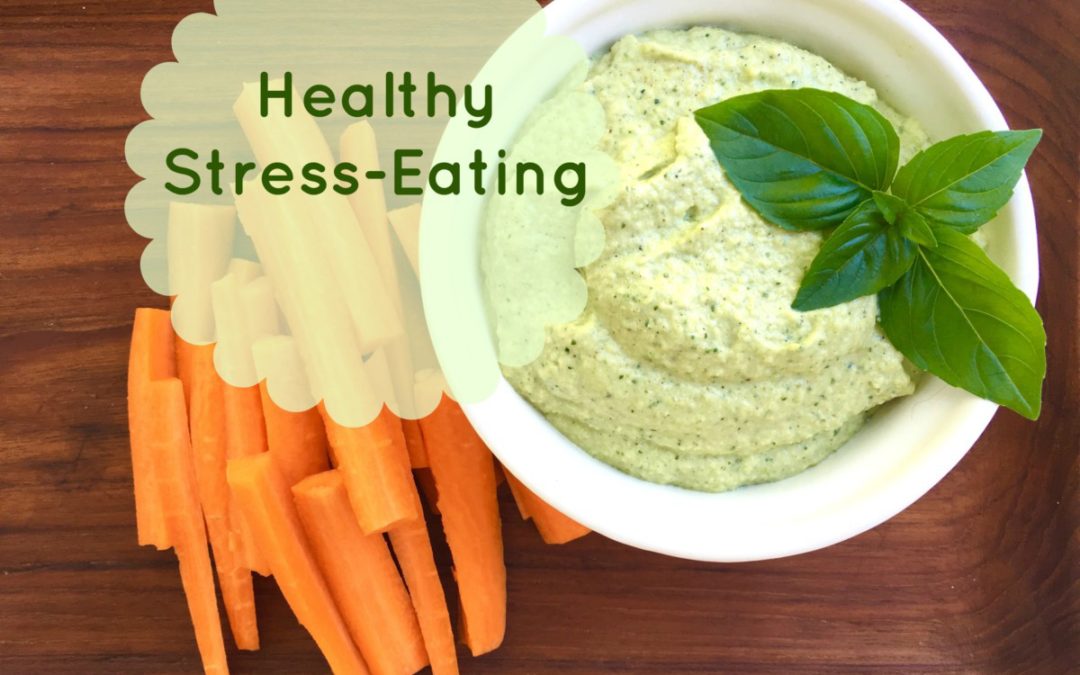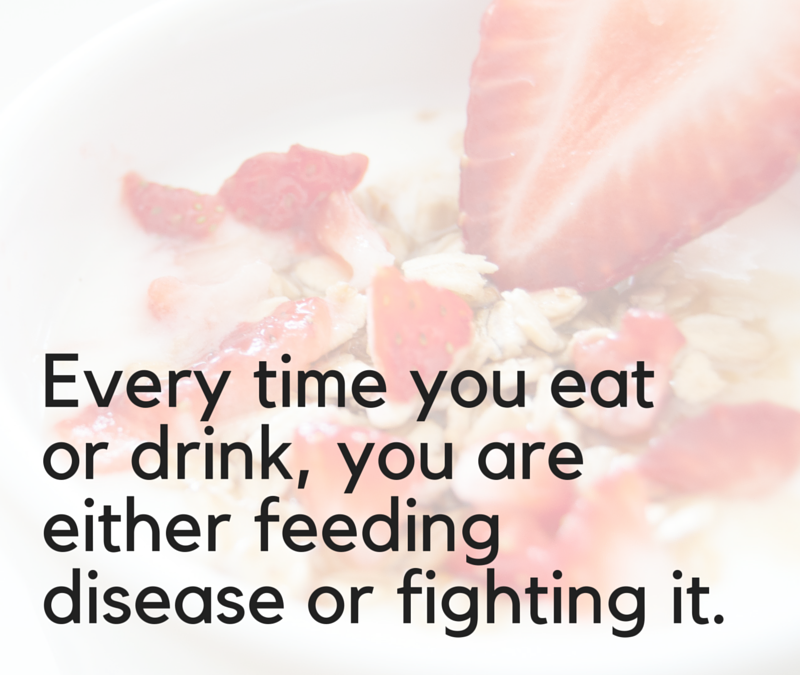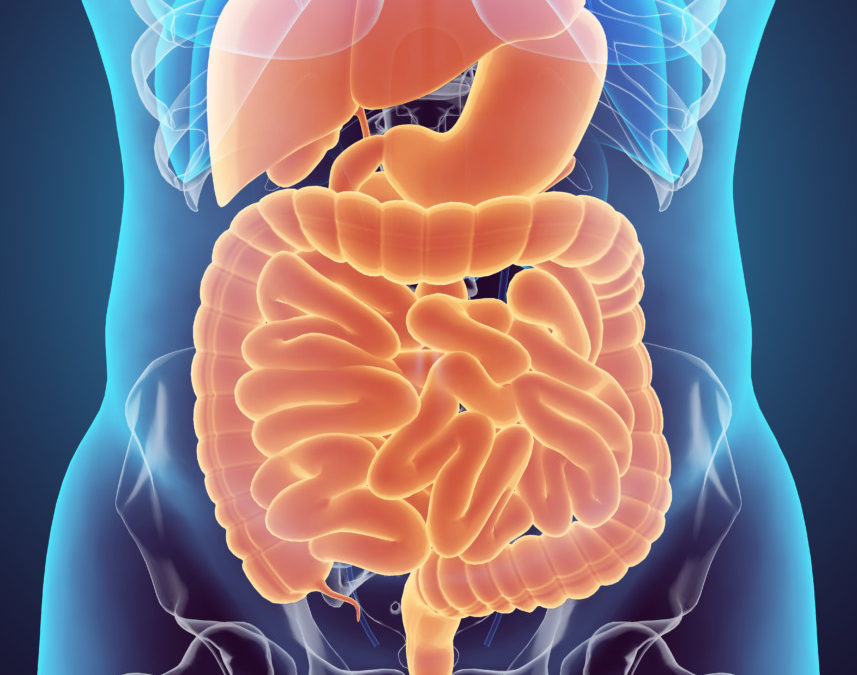
by Amanda Malachesky | Jul 2, 2018 | Brain Health, Chronic Illness, Digestion, Functional Nutrition, Inflammation, Symptoms
I first gave up gluten when I was 33 years old. I was suffering from recurring ovarian pain, and I eliminated gluten, dairy, and sugar to see if it would help. I felt remarkably better.
But gluten slid back into my diet, little by little. By my second pregnancy, two years later, it was open season. My main craving was a comfort food from my childhood: toasted crispy Thomas’s English Muffins. I ate scores of these gluten-filled snacks, with lots of butter. And pasta.
What I didn’t know at the time was that since gluten was problematic for me once, it was likely to be problematic for me on an ongoing basis. I wish I had known…
I’m not going to win any friends by saying this. But as a health professional, I need to say it: gluten is a problem for just about everyone. And it’s especially a problem if you are suffering from any kind of chronic illness or health complaint. It’s one of the first dietary shifts I ask my clients to make.
But people are understandably confused and a little defensive. You mean to tell me I can’t eat my pizza? My noodles? My bagels?
The answer is “Yes”.
Let’s bring some information to the table so we can at least answer the question: Why is gluten so bad?
What is Gluten?
Gluten is a collection of proteins that are found in certain grains: wheat, barley, rye, triticale, spelt, and kamut. Each of these grains has varying amounts of the many gluten proteins.
The most commonly-known gluten protein is gliadin, but there are many more gluten proteins in gluten foods.
There are several ways people can be sensitive to gluten.
So why is gluten and it’s protein such a problem for people with health challenges?
#1: Gluten Increases Intestinal Permeability (Leaky Gut)
Our health largely depends on a strong, resilient immune system. 80% of this immune system is located in the digestive tract. It’s responsible for protecting us from pathogens and toxins in our food.
When we have good gut function and a non-permeable gut, any incoming pathogens remain in the intestines and are disabled by the immune system and excreted.
But if our gut is “leaky” or permeable, those invaders can get past the defense systems and end up in our bloodstream. Invaders can be pathogens, like bacteria, viruses, or parasites. But they can also be proteins and peptides that didn’t get fully broken down in the stomach.
When the invaders and proteins enter the bloodstream, they are tagged by the immune system as a threat, and a more systemic immune response is mounted. (Read more about what happens next in #2 below).
A study published in the journal Nutrients showed that exposure to gluten increases intestinal permeability, no matter whether you are sensitive to gluten or not.
Though there are several reasons why your gut may become leaky, including stress, certain medications, and gut infections, frequently consuming gluten leaves your gut at constant risk of permeability.
Maintaining and repairing your gut barrier function is of primary importance for improving your chronic health challenges, no matter what form they take.
#2: Gluten-Induced Gut Permeability Contributes to Autoimmune Disease
There is increasing evidence that gluten-induced intestinal permeability is a major contributor to the manifestation of autoimmune disease. Partially digested proteins that sneak through a “leaky” gut barrier are tagged by the immune system as a problem.
The challenge is that those tagged proteins may resemble our own tissues. Once they are tagged, our own similar tissues are identified as a threat as well. This is thought to be one mechanism of the development of autoimmune disease.
If proteins that resemble thyroid tissue sneak through your leaky gut, your body may create thyroid autoantibodies, and you may develop Hashimoto’s thyroiditis.
If proteins that resemble nerve tissues sneak through your leaky gut, your body may create nerve autoantibodies, and you may develop fibromyalgia, or parkinson’s, or multiple sclerosis.
Especially for people facing one or more autoimmune diagnoses of any type, creating a gluten-free lifestyle and supporting proper intestinal function is an absolute must.
#3: Non-Organic Gluten-Grain Crops are Sprayed with Glyphosate
Glyphosate is the chemical herbicide and defoliant known by the trade name RoundUp. Glyphosate use in agriculture has skyrocketed during the last several decades.
Commercially-grown wheat (as well as GMO corn and soybeans) is routinely sprayed with glyphosate as a dessicant to speed drying in preparation for harvest.
Glyphosate has been shown to negatively affect the gut microbiome and to increase intestinal permeability. A paper in the journal Interdisciplinary Toxicology claims that people and animals exposed to glyphosate have less beneficial bacteria, and an increased incidence of infectious organisms. It also demonstrates that glyphosate has also been linked to esophageal damage, liver, gall bladder, and pancreas damage or disruption, and depletion of key nutrients, such as Vitamin A, Vitamin B12, Vitamin B9 (folate), iron, molybdenum, and sulfates.
Avoiding gluten foods helps you avoid exposure to glyphosate, which compounds the negative affects of gluten.
#4: Gluten is a high FODMAP food
Many people with chronic illness have a lot of digestive troubles, including painful bloating and gas, constipation, diarrhea, and cramping.
FODMAPs are a group of starches that some people have difficulty digesting. FODMAPs stands for Fermentable Oligo-, Di-, Mono- Saccharides And Polyols. When people with a FODMAP sensitivity eat high FODMAP foods, they often experience bloating and pressure in the gut, as well as diarrhea, constipation, or both.
If you experience any of these symptoms after eating gluten, it’s possible that you have a sensitivity to FODMAPs, and may benefit from removing gluten.
#5: Gluten can cause brain problems
Besides the increase in intestinal permeability, and all the possible downstream affects of that, gluten can increase inflammation. This can wreak havoc on the brain, and can cause neurological symptoms similar to psychological disorders and neurodegenerative diseases like Alzheimer’s and dementia.
Dr. David Perlmutter, in his NYT bestseller Grain Brain: The Truth About Wheat, Carbs, Sugar—Your Brain’s Silent Killers states:
“Gluten sensitivity—with or without the presence of celiac—increases the production of inflammatory cytokines, and these inflammatory cytokines are pivotal players in neurodegenerative conditions. Moreover, no organ is more susceptible to the deleterious effects of inflammation than the brain.”
There is even a strong link in the literature, from research going back 60 years, between schizophrenia and gluten intolerance. In a 1976 study published in Science, patients with schizophrenia on a gluten-free diet were challenged with gluten and experienced setbacks in their therapeutic progress.
For anyone suffering from brain fog, memory loss, mood challenges such as anxiety, depression, or more severe diagnoses, or dementia and Alzheimer’s, gluten should be avoided.
#6: There are many Great alternatives to Gluten!
Change is challenging, no matter who you are. Most of us are accustomed to eating gluten-foods, because that’s what we’re used to and it’s what’s available. But eating without gluten doesn’t mean you have to miss out on yummy food.
Many gluten foods, whether they are organic or not, are highly processed foods, made with white flour. Examples include your noodles, tortillas, breads, cereals, crackers, pretzels, cakes, and cookies.
Most of us eat too much of these foods, and could benefit from shifting our diet away from them, and towards a more whole-food plate. Instead of bread and pasta, choose whole grains (if those work for you).
Instead of bread, swap a lettuce or kale wrap.
Why not try a nut-based, high fiber bread?
And, of course, there are many gluten-free versions of these foods as well. Though I generally don’t recommend them due to their glycemic load, as a transition food to help wean you away from gluten, I find them quite useful.
Conclusion
Even if we are not suffering from a chronic or autoimmune disease, or complex health challenge, there are still reasons to avoid gluten. Removing gluten helps limit carbs and processed foods, and proactively reduces blood sugar problems, inflammation, and intestinal permeability to preserve your hard-earned health.
There are lab tests to test for gluten sensitivity, but the best and cheapest way to find out if gluten is a problem for you is to remove it for a few weeks, and then eat some and watch for 4 days. If you experience symptoms with this trial, you will want to keep gluten out of your diet.
While many of us with chronic illness and autoimmune disease may need to make many individualized dietary changes to best support our health, gluten is one food that hands down must be avoided. If we weigh the risks and benefits, we have a lot to lose by continuing to eat gluten, and very little to gain, other than symptoms of brain fog, weight gain, blood sugar problems, and intestinal permeability.
Getting gluten out of your life can be a challenging experience, and requires some finesse, compassion, and patience! When you are ready for support in removing gluten from your life, I invite you to schedule a free Assessment Session to find out how I could help you with this process.
And when you’re ready to understand the big picture of how removing gluten fits into the whole process of restoring your health, grab your free copy of Roadmap to Recovery: How to Move Beyond Your Symptoms and Create a Personalized Plan to Restore Your Health here.

by Jen Briar-Bonpane | Jan 18, 2018 | Brain Health, Digestion, Inflammation, Stress, Symptoms
Are you stressed? Chances are, your stress is affecting your digestion. When we are in very stressful or chronically stressful situations, our fight-or-flight response gets activated. In order to preserve needed energy to deal with what the body perceives as a threat (this could be a toxic boss, experiencing racism, marital conflict, financial stressors, internal stressors like infections or inflammation, etc), our wise bodies slow digestion down and sometimes even bring digestion to a complete stop. This contributes to all kinds of symptoms. Stress and anxiety also make pre-existing gastrointestinal conditions worse.
Since most of our serotonin is made in the gut, digestion that is disrupted by stress will interfere with our supply of this feel-good neurotransmitter. Bring on the depression and anxiety.
What aspects of your life create stress? Not all stress is bad, of course. The stress we feel when working hard to complete a meaningful project on time or the stress we feel when preparing for long-awaited vacation are part of the landscape of life. Stress that goes on for long periods of time or stress resulting from major dysfunction or threats to our well-being is the kind that harms our digestion (and therefore our overall physical and mental health). Usually, we can’t eliminate or decrease these major stressors over night. In the meantime, here a 5 things you bring into your diet to buffer the damage while you make your plan to downsize your stress load.
5 Tips for Healthy Stress Eating
- Eat dark, leafy green veggies. Spinach, for example, is packed with folate which promotes the production of serotonin and dopamine … neurotransmitters that support calm and positive moods. Raw greens can be hard to digest if your gut is struggling so cooking your greens first is helpful. Massaging also works.. try this Kale Salad recipe for an easy dose of mood boosting goodness.
- Tryptophan-rich foods supply the amino acid needed to make serotonin and boost your mood. Turkey, pumpkin seeds, and organic pasture raised eggs are great sources of tryptophan
- Fermented foods boost the beneficial bacteria in your gut which can improve digestion, nutrient absorption, and decrease depression and anxiety. Try fermented vegetables (unpasteurized kim chee or sauerkraut are great), kefir or yogurt that are low in sugar(non-dairy forms like almond or coconut based varieties will be less inflammatory than those made from cow’s milk), and fermented drinks like kombucha or water kefir.
- Skip the sugar! Stress often triggers sugar cravings. Then we eat that sugar and begin the chemical process that leaves us craving more and more sugar. Stress and poor digestion can create fatigue and leave us grasping for the quick energy and temporary mood boost (a brief high that puts us into an addictive cycle) that sugar can produce. Though this might feel good for a few minutes, it is creating toxicity and gut damage that will make us feel worse in the long run. Consuming refined sugar also sets us up for a blood sugar roller coaster that directly results in irritability, depression, anxiety, and disrupted sleep.
- Stabilize your blood sugar. Skipping meals is one of the worst things we can do during times of stress. Eating 3 balances meals per day with lots of whole foods is crucial to keeping our blood sugar stable. Aim for some fiber, health fats, and protein in each meal and avoid processed food to support your gut, brain, and overall well-being. Keep healthy snacks like kale chips, pumpkin seeds, pistachios, avocado slices, flax-seed crackers, hummus, or coconut chips on hand in the event you get hungry between meals or have to work through lunch.
Lots more idea, recipes, and guidance for healing your digestion are available in our upcoming Gut Restore program.

by Jen Briar-Bonpane | Jan 16, 2018 | Brain Health, Digestion, Inflammation, Recipes
Guacamole gets my vote as a superhero among condiments. It’s easy to make, so yummy and filled with healthy fats, vitamins, enzymes and fiber. At the store you can find so many pre-made versions of guacamole that are loaded with artificial preservatives and MSG. Or, even worse, those flavor packets with bad iodized salt, MSG and dehydrated vegetables that you’re supposed to mix in with wholesome precious avocados.
Fresh, homemade guacamole from scratch takes less than 10 minutes and is infinitely better than anything you can get from the store.
You can do the basic recipe or get creative with flavorful variations. I love adding a fresh chopped tomato or red onion or even cinnamon to my guacamole for an extra burst of flavor and color. If you like it spicy you can experiment with adding any of the rainbow of hot pepper varieties. The options are deliciously endless. But for now, here is the basic version..
The Basics of a Beautiful Guacamole
The most basic version of guacamole that you can mash together in under 5 minutes.
2 ripe avocados
1 clove fresh minced garlic
1 tablespoon lime juice
Handful chopped cilantro
1 teaspoon sea salt
Drizzle of olive oil
Mash the avocado and mix in the rest of the ingredients.
Some days there is nothing better than sticking to the basic and keeping it simple. On on other days you might want to jazz it up…
Guacamole Supreme
2 ripe avocados
1 clove fresh garlic, minced
1 tablespoon lime juice
¼ cup red onion, very finely chopped
1 jalapeno pepper, seeds removed, very finely chopped
1 ripe roma tomatoes, finely chopped
1 tablespoon olive oil
1 teaspoon sea salt
Handful of both cilantro and parsley, finely chopped
Mash the avocado and mix all ingredients together.
If you like it ultra smooth and fluffy, add all ingredients to your blender and process until velvety.
How do you guac? Comment below!

by Jen Briar-Bonpane | Jan 12, 2018 | Brain Health, Digestion, Recipes
I hope 2018 is off to a healthy start for you.
Did you know cultured foods are all the rage? And rightly so.
They whip your digestive system into shape by packing it full of the good bacteria your gut is probably starving for.
That’s why I had to share this phenomenal cultured recipe from my upcoming 8-week Gut Restore program. Give it a try and see what you think. Your gut, and the rest of your body, will thank you.
This recipe is one of over 59 recipes in my Gut Restore program that could be a game changer for your health. It starts February 1st with early bird discounted pricing through January 22nd. Join us and make 2018 your year to thrive.

Coconut Yogurt
(ADAPTED FROM NOMNOMPALEO.COM)
Serves 2
1 15-ounce can full-fat coconut milk (BPA-free can)
1 probiotic capsule (at least 50 billion)
Refrigerate the coconut milk for about an hour while it is still in the can to create a thicker yogurt.
Next, remove the coconut milk from the can, and place it in a sterilized jar. Add the contents of the probiotic capsule. Mix the contents well, and tightly close the jar.
To incubate the yogurt, place your jar of coconut milk in the oven with the light on and tightly close the door. Do not turn the oven on. A closed oven with the light on generates heat of about 105 to 110° Fahrenheit. Incubate your yogurt for up to 24 hours.
In Health,
Jen Briar-Bonpane, LCSW, CIHNC

by Amanda Malachesky | Dec 6, 2017 | Brain Health, Digestion, Functional Nutrition, Inflammation, Symptoms
What body system is at the center of any illness, symptom, diagnosis, happy moods, well-being, and vibrant health?
If you guessed the digestive system, then you nailed it! Digestive symptoms are strong clues that something isn’t right inside our bodies, and that our digestive system needs a little bit of extra attention. Things like constipation, heartburn, acid reflux, bloating, gas, and more are important message that are worthy of our attention.
Sometimes, this can seem a little bit confusing. You mean that digestion plays a key role in depression or anxiety? Or heart disease? Or Arthritis? The answer is yes. Here’s how.
Reason #1: Digestion is our Source of Needed Nutrients
A full spread of nutrients is needed for the body to do everything it does: power our muscles and brain so we can move and work, repair damage, detoxify any exposure to harmful substances, maintain appropriate levels of minerals and vitamins, and so on.
If shortages of nutrients become significant enough, function begins to break down. For example, if we don’t have enough B vitamins and antioxidants, such as vitamin A, C, and E, then we won’t be able to neutralize cell-damaging free radicals, because this clean up process require these nutrients.
Digestion is our source for these nutrients that power thousands of essential body functions every single day. If digestion is compromised, by hidden infections, inflammation from food sensitivities, previous antibiotic use or other medications, or other factors, it’s not too difficult to become deficient in important, necessary nutrients.
Interestingly, many of the nutrients we use are synthesized in our digestive tracts by the resident bacteria. If we have an imbalance of this microbiome, we may have a compromised ability to create and use certain nutrients.
Cleaning up the digestive system is super important, to make sure we are able to access all the nutrients we need from our food.
Reason #2: The Gut Has a Direct Communication Line to the Brain
The digestive system has a direct line of communication with the brain: the vagus nerve. When something goes wrong in the gut, say it gets invaded by a bacteria, the vagus nerve sends a signal to the brain that something is wrong, and this can affect our moods.
Have you ever heard the expression “I had a gut feeling”, or “I had butterflies in my stomach”? This is the gut-brain connection in action. How about the way in which nervousness can trigger diarrhea or nausea? Same thing.
There are lots of studies being published all the time showing how the composition of the gut microbiome has a profound affect of emotions and health. Balancing your microbiome is not only the key to decreasing digestive symptoms and making sure you can access and make important vitamins and other nutrients, it is also the key to promoting positive moods, and protecting your body from invading microorganisms.
The gut immune system is designed to protect us from hitchhiking bacteria, parasites, viruses, and fungus. If this system goes down, or is imbalanced, we are vulnerable to infection, imbalance, and all the downstream effects (see Reason #1).
80% of the immune system is centered in the gut, because besides our respiratory systems and reproductive systems, this is the place where we are daily exposed to outside influences. This means it is also the place where we have a lot of leverage to shift the terrain of our health.
Reason #3: Healthy Elimination Means Healthy Detox
Now we’re going to talk about the other end of digestion, which is elimination. Like I mentioned in Reason #1, our body uses lots of its nutrients to clean up and detoxify incoming pollutants.
In today’s day and age, we are constantly exposed to chemicals in the form of pesticides, herbicides, xenoestrogens, heavy metals, petrochemicals in air pollution, and many of us work in environments where we are exposed to other types of toxins.
Our liver does the heavy lifting here, using up all those antioxidants and B vitamins and amino acids to break the toxins down into water or fat-soluable parts that can then be eliminated by the kidneys in the urine, or by the bowel, in the stool.
But how many of us poop irregularly, or struggle with constipation? Ideally, we should be pooping 1-3 times per day, with ease. If you aren’t eliminating regularly, it’s likely you aren’t efficiently eliminating all those environmental toxins that your body is working so hard to break down. These toxins accumulate in the digestive system, and can affect the balance of the microbiome (see Reason #2), or are reabsorbed from the bowel, and can end up depositing into tissues in the body, and causing problems.
Making sure you are regularly eliminating is a super important part of supporting digestive health, and promoting overall health.
How do we make sure the digestive system is working well?
The first step is to remove any inflammatory foods. I always start my clients with removing gluten, diary, and sugar. If we need to identify other foods, we go deeper, but many people find that these three foods are actually contributing to digestive and deeper trouble.
The next step is to supply nutrients that may be deficient, to make sure the body can keep performing its essential functions of maintenance and detoxification.
Lifestyle habits regarding sleep, stress management, and exercise often need to be rearranged to support health, and improve and promote effective digestion.
Finally, if all these changes don’t resolve digestive or other challenges, we need to explore whether there may be hidden infections in the digestive system or elsewhere that need to be addressed.
Working through these steps provides powerful relief from many common symptoms, and even some diseases.
Who knew? Digestion holds the key to better health! What have you found that best supports your healthy digestion? Comment below!


by Amanda Malachesky | Jun 26, 2017 | Brain Health, Functional Medicine and Coaching, Functional Nutrition, Stress, Symptoms
As a practitioner, I really like to help my clients delve into the why behind their health problems, and to explore angles they may not have considered before. The four main pillars of the programs I create for clients are diet, exercise and movement, sleep, and stress.
Stress really wreaks havoc on our health in so many different ways, and it’s one of the foundational areas I help with. Stress can impact our sleep, decrease the function of our immune system, disrupt digestion, mess up our relationships, and leave us feeling anxious, tired, worn out, frazzled, and spent.
What I’ve also noticed, however, is that it can be SO difficult to let go of our habits and patterns that allow a stressful mindset to continue. But to move forward on our healing journeys, we must dial down the stress. This includes reducing or removing hidden infections, like parasites, viruses, or bacterial infections, environmental stresses like mold or toxins, negative people in our life, or dealing with hidden nutritional deficiencies. But it can also mean retraining and reframing our brain and how we respond to our daily life.
Here are some signs that you might need to work on training your brain for calm:
- Even when you are trying to relax, your brain remains busy, thinking about a million things.
- You have difficulty falling or staying asleep, because your mind is busy, or startles easily.
- You lose your temper easily, even from small inputs.
- You are plagued by memories or dreams of scary, traumatic, or stressful events.
- You regularly have negative thinking patterns, where you assume the worst about people, the future, or your current situation.
- You struggle with phobias or non-specific anxiety.
I want to share a few resources for you to explore if you are needing to retrain your brain for calm. Especially if you are a person who is carrying the burden of trauma in your past, I want you to know that there are ways to help your brain and body release those stored memories and process the pain attached to them. You will always have the memories, but it is possible to separate the emotional charge from them, so they don’t run your life anymore.
Emotional Freedom Technique
Emotional Freedom Technique (EFT), also called tapping, is a method of helping the brain to discharge stressful and traumatic events, and reach a state of resolution and peace. EFT was developed by Gary Craig, a Stanford-educated engineer. It has been particularly useful for those suffering from Post Traumatic Stress Disorder (PTSD), but has also proven useful for managing pain, phobias, anxiety, illness, and many other conditions.
To use EFT, a person explores the roots of a difficult emotion and verbally expresses the situation in a particular way. The person then taps particular points on the body in a specific sequence while verbalizing a shortened version of the statement they created. It’s not clear exactly why it works, but I suspect that this method helps the brain reconnect the emotional impact of an event with the more analytical present-time mind, which allows the brain to process the experience and move on. I have seen this technique produce remarkable results for many of my clients.
Anyone can learn to do EFT for themselves by visiting the Emotional Freedom Technique (EFT) website www.emofree.com, and learning the method for free with a manual and/or videos. It doesn’t take long to learn, and can create a significant reduction in difficult emotions and trauma in a very short amount of time.
Eye Movement and Desensitization and Reprocessing (EMDR) Therapy
EMDR therapy is an evidence-based type of psychotherapy, also commonly used to help with PTSD. Bilateral visual or aural stimulation is used to help the brain access it’s built-in methods for adapting to and processing trauma. It can help the person access painful or difficult memories, and then allows them to process them within a therapeutic environment.
EMDR therapy is available by seeing a therapist trained in the modality. To find a trained clinician, you can visit the EMDR Institute website. For further reading about EMDR, check out EMDR: The Breakthrough Eye Movement Therapy for Overcoming Anxiety, Stress, and Trauma by the founder of EMDR, Francine Shapiro, PhD.
Self-Hypnosis Recordings
I’m a fan of techniques and methods that my clients can use and access in their own home, at a time and place of their choosing. Self-hypnosis is a way to help the brain access a relaxed and suggestible state, and can double as not only stress relief, but retraining the mindset to a positive and healing state.
People with long-term chronic and complex illness can often become discouraged to the point where they believe they may never get well. This negative thinking pattern can become quite “sticky”, and can become a source of stress in and of itself. There are hundreds of self-hypnosis recordings out there. They are inexpensive, and focus on a wide array of issues, from insomnia, stress, specific illness, headaches, and even childbirth.
I like to suggest clients start with one or two recordings that they like, and consistently listen to them, while falling asleep, or any other time it is safe to do so. It can take some time to rewire the brain, so consistency here is key. As an example, I struggled with insomnia for several years, since my kids were born. I had trained myself to wake up to every little tiny sound at night, and could no longer sleep through the night. I tried a lot of solutions, including supplements, dietary changes, routine changes, and more, and nothing worked.
Last winter, I invested in a sleep hypnosis app, called Sleep Well by Surf City Apps, and began listening to it nightly. It took about 4 months, but slowly, I began to sleep deeply, fall asleep faster, and wake up feeling more refreshed. You can do this too! Get out there and find a recording that is relevant to you, and enjoy.
Meditation
No conversation about retraining the brain would be complete without mentioning meditation. Meditation is consciously focusing on your breathing and thinking patterns with the goal of calming the mind. Here are some of the many benefits of meditation:
- lowers blood pressure
- improves depression and anxiety
- increases self-awareness
- reduces chronic pain
- increases immune function
- improves sleep disturbances and fatigue
- improves gastrointestinal problems, such as IBS
- slows aging
- increases happiness
There are many meditation traditions, and ways to explore. Books, videos, recordings, and classes are all viable ways to access meditation and to give it a try. Here is one of my favorites, The Little Book of Mindfulness by Patricia Collard.
Many people imagine that meditation is a bunch of monks chanting in colorful robes, but it really is a practice of personal awareness that can be adapted to any lifestyle or spiritual tradition. Any activity at all can be an excuse to bring the mind to a meditative state, such as taking a walk, playing music, drinking your morning tea or coffee, or anything else that allows your mind to quiet itself.
I hope that this information is helpful for anyone suffering from a troubled mind.
How do you train your brain for calm? Comment below…






